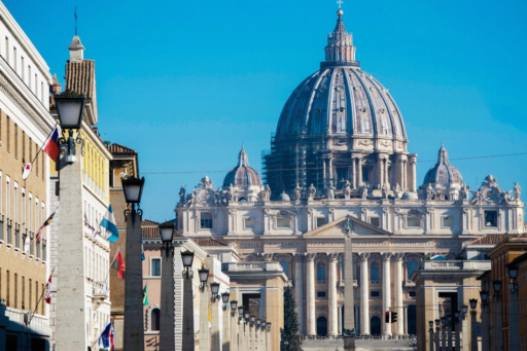Michelangelo's Pieta is a renowned masterpiece that captures the essence of the Renaissance era. With its intricate techniques, the sculpture has sparked controversies, undergone restoration efforts, and left a lasting impact on the art world. Let's delve into the fascinating world of Michelangelo's Pieta and explore the significance it holds in art history.

Techniques Used by Michelangelo in Creating the Pieta
Michelangelo's Pieta is a masterpiece of sculpture that showcases the artist's exceptional skill and talent. In creating this iconic work, Michelangelo employed various techniques to bring the marble to life. One of the most notable techniques used by Michelangelo in creating the Pieta is his mastery of anatomy. The figures in the sculpture, particularly the body of Christ, are incredibly realistic and show a deep understanding of the human form. Michelangelo's careful attention to detail and precision in sculpting each muscle and bone structure contribute to the lifelike quality of the figures. Additionally, Michelangelo's use of contrapposto, a technique that creates a sense of movement and naturalness in the pose of the figures, adds to the dynamic and expressive quality of the Pieta. The drapery in the sculpture is also expertly executed, with intricate folds and creases that create a sense of texture and movement. Overall, Michelangelo's meticulous attention to detail and his technical skill in sculpting the human form contribute to the enduring beauty and power of the Pieta.
Controversies Surrounding Michelangelo's Pieta
Michelangelo's Pieta has not been without its controversies throughout history. One of the main points of contention surrounding the sculpture is the youthful appearance of the Virgin Mary. Some critics argue that Mary appears too young and beautiful, not reflecting the usual age and sorrow associated with a mother mourning her dead son. This departure from traditional representations of Mary has sparked debate among art historians and religious scholars.
Another controversy surrounding the Pieta is the damage it has endured over the years. In 1972, a mentally disturbed man attacked the sculpture with a hammer, causing significant damage to Mary's nose, arm, and eyelids. This act of vandalism led to further debate about the protection and conservation of iconic works of art like Michelangelo's Pieta.
Furthermore, the issue of ownership and location of the Pieta has also raised controversies over the years. The sculpture was originally commissioned for the French cardinal Jean de Bilhères, but it was later acquired by the Vatican and placed in St. Peter's Basilica. Some have argued that the Pieta should be returned to its original location or that it should be housed in a different setting to better protect and preserve it.
Overall, the controversies surrounding Michelangelo's Pieta serve as a reminder of the enduring impact and significance of the masterpiece, while also highlighting the complex and multifaceted nature of art and its place in society.
Restoration Efforts on Michelangelo's Pieta
Restoration efforts on Michelangelo's Pieta have been ongoing since the statue was first created in the late 15th century. Over the years, the Pieta has suffered from damage caused by environmental factors, vandalism, and attempted theft.
The most significant restoration effort took place in the late 20th century when the statue was accidentally damaged by a mentally disturbed individual. The vandal, who was wielding a hammer, managed to break off Mary's nose, a finger, and her eyelid before being subdued. The damage caused by this attack was extensive, and experts spent months painstakingly restoring the statue to its former glory.
In addition to deliberate acts of vandalism, the Pieta has also suffered from natural wear and tear over the centuries. The marble used to create the statue is susceptible to erosion and discoloration, and restoration efforts have been aimed at cleaning and preserving the original surface of the sculpture.
Restoration efforts on Michelangelo's Pieta have been controversial at times, with some experts arguing that excessive restoration can cause irreparable damage to the statue's historical integrity. However, many agree that periodic restoration is necessary to ensure the long-term preservation of this iconic work of art.
Influence of Michelangelo's Pieta on Renaissance Art
The Pieta created by Michelangelo had a profound impact on Renaissance art. Its emotional intensity, intricate detail, and realistic portrayal of the human form set a new standard for artists of the time. Many artists sought to emulate Michelangelo's style, incorporating his techniques and themes into their own works. The Pieta also served as a symbol of the Renaissance focus on individualism, humanism, and the revival of classical ideals. Its influence can be seen in the work of artists such as Raphael, Leonardo da Vinci, and Donatello, who all drew inspiration from Michelangelo's masterpiece. Overall, the Pieta played a significant role in shaping the artistic landscape of the Renaissance period.
